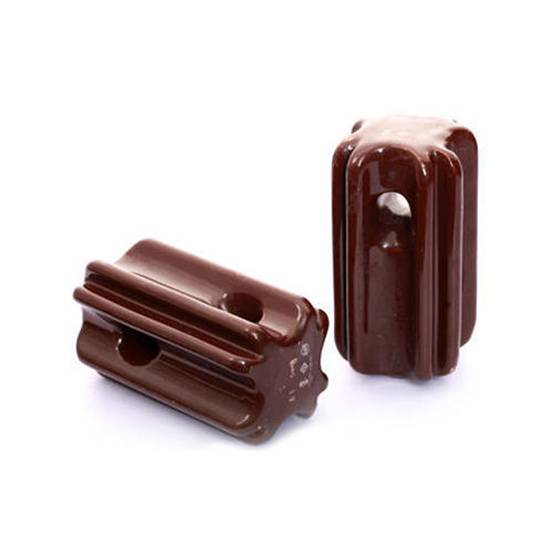
A stay insulator is a component used to support and insulate overhead electrical lines or conductors. They install at points where the conductors change direction or areas that need extra support. Stay insulators are from materials like porcelain, glass or composite materials. The materials provide best insulating properties and durability against environmental conditions. They stay insulator ensures the safe and reliable operation of overhead electrical systems. This is by preventing electrical faults cased by conductor contact with grounded surfaces. Using stay insulators helps to reduce the risk of power outages and electrical accidents. Stay insulators also provide electrical insulation and support to ADSS and OPGW cables. Common types of stay insulators include porcelain, glass, composite or hybrid stay insulators.
Properties of a stay insulator
Stay insulators have some properties that make them essential in electrical installations. Stay insulators provide support to the electrical systems to ensure safety and reliability. Their properties also help them to maintain their performance standards. The following are the common properties of the stay insulator.
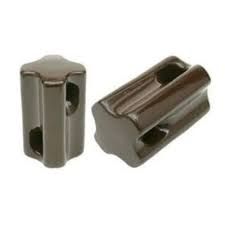
- Insulating properties – stay insulators have designs to provide high electrical insulation resistance. They also help to prevent current leakage and ensure safe transmission of electricity.
- Corrosion resistance – the insulators have designs to resist corrosion for long-term reliability.
- Lightweight – lightweight stay insulators help to reduce the strain on support structures. They however provide strength to such applications.
- Electrical performance – the insulators should show low electrical loss and high dielectric strength. This is to reduce energy losses and ensure the efficient transmission of electricity.
- Mechanical strength – the insulators must withstand mechanical stresses without breaking or deforming. They should withstand stresses from wind, ice and weight of the conductors.
- Weather resistance – stay insulators have designs to resist environmental factors and maintain performance. They should be able to resist conditions like rain, sunlight, extreme temperatures and pollutants.
- Dimensional stability – stay insulators should maintain their shape and dimensions under various conditions. This is to prevent changes in the tension of the overhead lines.
- Ease of installation – the insulators should be easy to install and to maintain. This is to allow for efficient deployment.
Working of a stay insulator
The main function of the stay insulator is to provide support and electrical insulation in electrical systems. They also prevent current leakage and electric faults to ensure reliability. The following is a basic guide on how a stay insulator works.
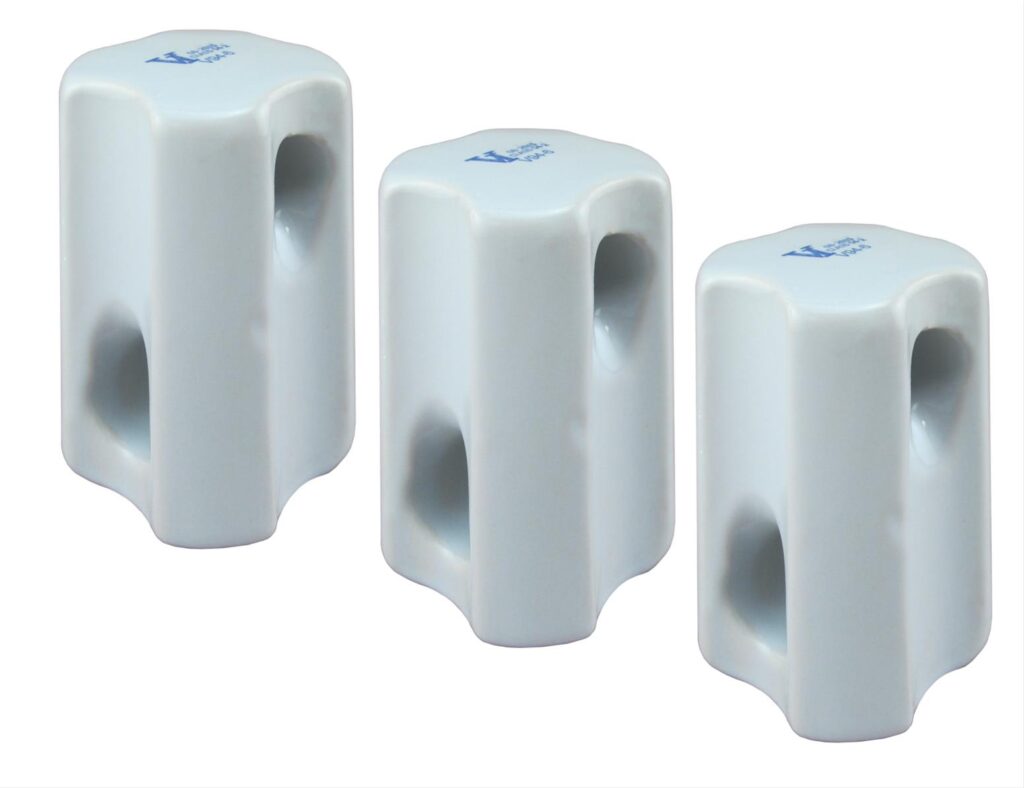
- Insulation – stay insulator provides electrical insulation between the conductor and the support structure. The insulating material has high electrical resistance to prevent the flow of current from the conductor to the ground.
- Prevention of electrical faults – stay insulators prevent electrical faults that occur due to conductor contact with grounded surfaces. This helps to maintain the safety and reliability of the electrical system.
- Dielectric properties – the insulators should have high dielectric strength to withstand the voltage levels in the electrical system. This is to prevent electrical arcing or flashovers which occurs if a conductor fails under high voltage conditions.
- Mechanical support – the insulators serve as mechanical supports for the overhead lines. the insulator should withstand the mechanical stresses from the conductor. This is including tension, compression, bending and vibration.
- Environmental protection – stay insulators protect the overhead lines from environmental factors. The insulating material is able to resist degradation and maintain the performance to ensure the longevity.
- Maintenance of tension – the insulators help to maintain the tension of the lines by anchoring them to the support structure. Proper tension helps to ensure the stability and sag of the conductors within their limits.
Selecting the best stay insulators
Stay insulators are of different designs and specifications for different use in the field. It is important to select the stay insulators that are best suited for your type of application. This is to ensure electrical insulation, mechanical support and long-term reliability of the transmission system. The following are the various factors to consider when selecting the stay insulator.
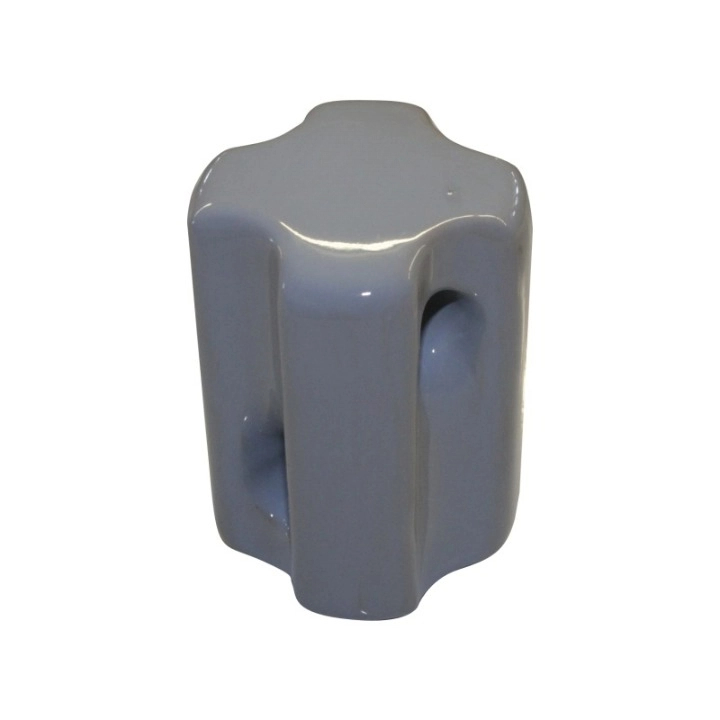
- Manufacturer reputation – consider the manufacturer and supplier’s reputation in the market. They should have a proven track record of producing high-quality devices. A reliable manufacturer will provide guidance, technical support and after sales service.
- Voltage rating – check the voltage rating and electrical insulation requirements of your specific application.
- Environmental conditions – consider the environmental conditions which the stay insulators will work in. These factors include pollution levels, humidity, temperature variations, UV exposure and coastal environments.
- Mechanical strength – check the mechanical strength of the insulators depending on various factors. The insulator should withstand weight of conductors, wind loads and ice accumulation.
- Costs – consider the cost effectiveness of the stay insulators. This is by taking into account the upfront costs, long term maintenance requirements and expected lifespan.
- Mechanical load – assess the mechanical load capacity of the stay insulators. Consider factors like tension, compression, wind loads, ice loads and other mechanical forces.
- Installation needs – consider the installation configuration of the stay insulator. This is including type of support structure, conductor arrangement and the angle of deviation.
- Material – select the stay insulators with the best material based on your kind of application. Common materials include porcelain, glass or composite materials.
- Creepage distance – ensure the stay insulators have enough creepage distance to prevent surface leakage.
- Standards and regulations – ensure the stay insulators meet the relevant industry standards. This may include standards for electrical insulation, mechanical load capacity, pollution performance and environmental conditions.
Proper installation of guy insulators
The installation for stay insulators requires careful planning and adherence to safety procedures. The process involves securing and positioning the insulators on guy wires. This is to provide electrical insulation and mechanical support. The following is a general installation process of the stay insulator.

- Preparation – conduct thorough site assessment and determine the suitable locations for installation. Also, ensure all the staff adhere to safety protocols and guidelines during the installation process.
- Insulator inspection – inspect each of the stay insulator for any visible damage or defects. They should also match the specified voltage rating.
- Assembly – assemble the stay insulators according to the provided instructions and ensure all components are secure. Attach the metal rod to the insulator to connect to the support structure.
- Stay insulator positioning – determine the proper spacing and positioning of the stay insulators along the guy wires. Also, ensure the insulators align with the direction of the guy wires.
- Attachment to guy wires – attach the stay insulators to the guy wires using suitable hardware such as clevises or brackets. Ensure the insulators align according to the direction of the conductors.
- Mechanical load distribution – ensure the installation allows for even distribution of mechanical loads across installed stay insulators.
- Tightening and fastening – tighten all fasteners such as bolts or nuts to prevent movement of the insulators.
- Alignment check – confirm the stay insulators align and not subject to any necessary stress or strain. Ensure the conductors are evenly tensioned and aligned to prevent excessive sagging or uneven loading.
- Testing – perform tests to ensure the electrical insulation properties of the stay insulators. Check for signs of electrical leakage or abnormal behaviour that state a problem with the installation.
- Documentation – maintain detailed documentation of the installation process. This is including the location of each stay insulator, torque values and any adjustments made.
Maintenance practices for stay insulators
Regular maintenance of stay insulators ensures their continued effectiveness and performance. It also helps to provide electrical insulation and mechanical support to guy wires. Additionally, it also helps to identify and address potential issues that may cause failures and accidents. The following is a basic guide on the maintenance of the stay insulators.
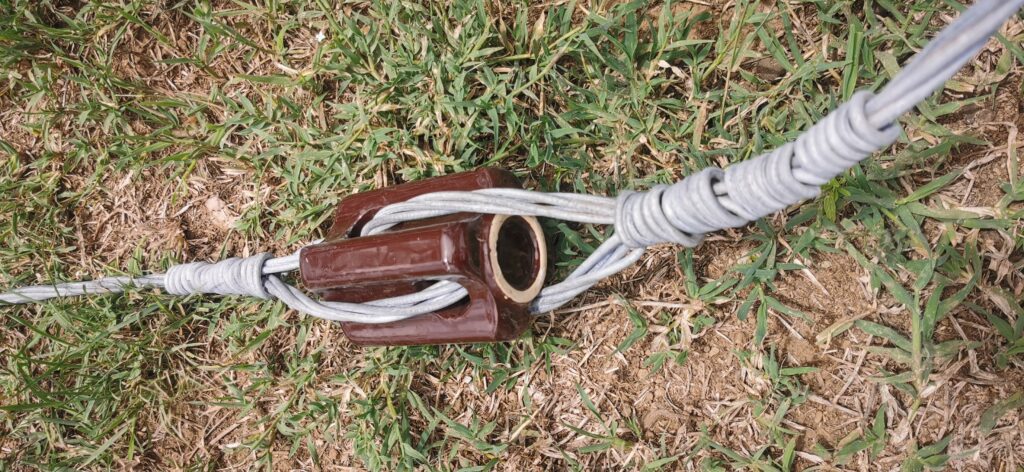
- Conduct regular visual inspections of each stay insulator to check for any visible signs of damage, cracks or contaminants.
- Use a mild detergent to remove dirt, dust or any deposits that may influence the performance of the stay insulator.
- Verify the creepage distance along the surface of the stay insulator is free from tracking or deposits. The distance should also follow design specifications to prevent surface flashovers.
- Conduct electrical tests to assess the insulation resistance and electrical performance of the stay insulator.
- Assess the mechanical load on the stay insulators considering factors such as wind, tension in the guy wires and any extra loads.
- Inspect the stay insulators in coastal areas for signs of corrosion on metal components. Consider applying protective coatings to extend the insulators lifespan.
- Use thermal imaging techniques to identify abnormal temperature variations on the surface of the stay insulators.
- Conduct periodic load tests to ensure the insulators can handle mechanical loads as per design specifications.
- Maintain detailed records of inspections, test and any maintenance activities performed on each insulator.
Frequently asked questions
A stay insulator is a component used in electrical installations to provide support and insulate electrical lines. its main purpose is to provide electrical insulation between the conductor and the support structure.
Key properties include voltage rating, mechanical strength, insulating material, environmental resistance and creepage distance.
Stay insulators provide electrical insulation, mechanical support and environmental protection to electrical lines.